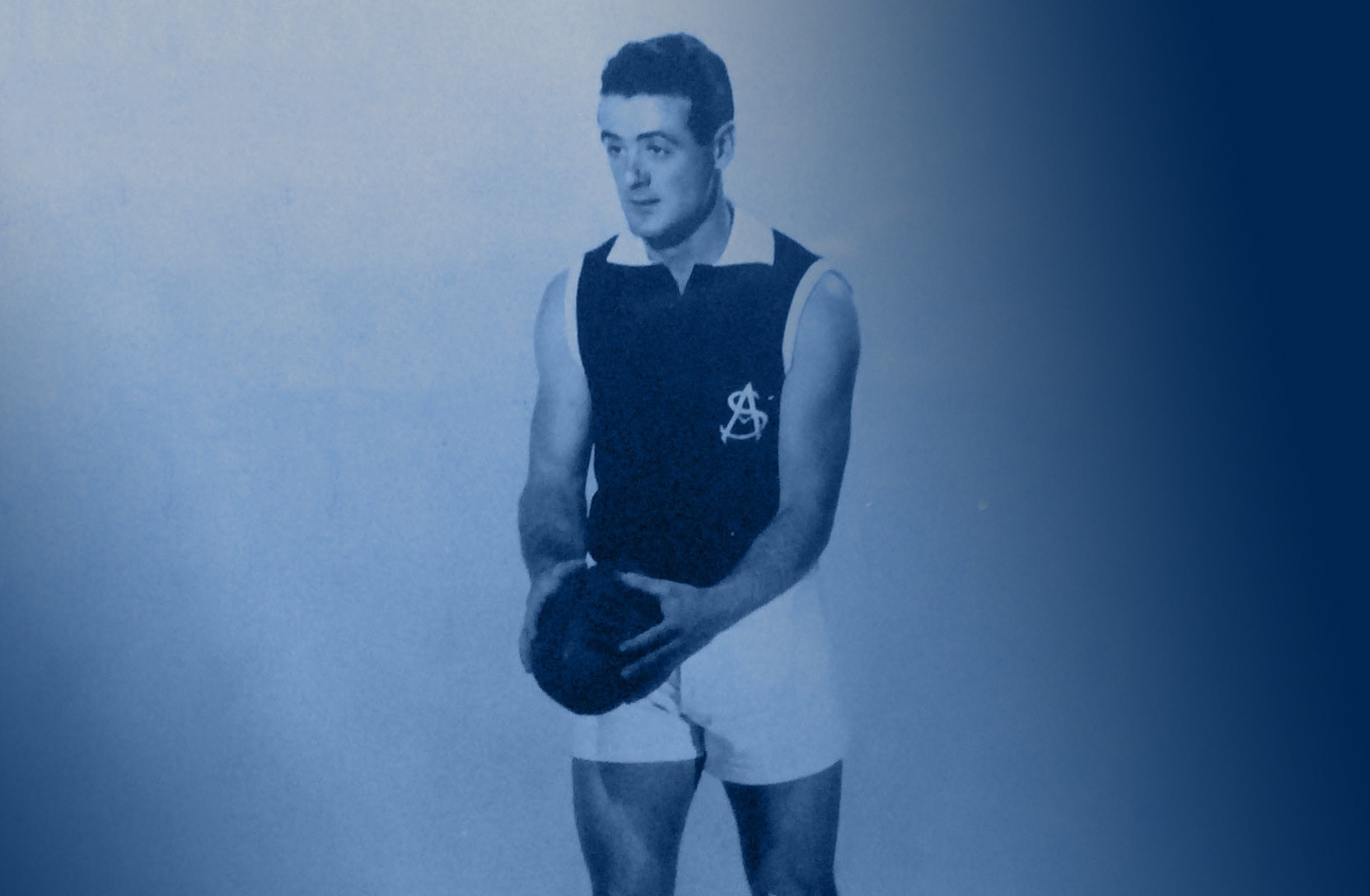
SANFL History – Enamoured with Jimmy Deane
South Adelaide great Jimmy Deane is the subject of a book written by former Panthers historian John Althorp.
SOUTH ADELAIDE is an SANFL foundation club with a rich story in the pioneer days of South Australian football … and one man knows it better than most.
MIKE SEXTON tells the tale of the man ensuring the milestones in South Adelaide’s significant pathway since 1876 are well marked – John Althorp.
When South Adelaide placed a small advertisement in Panther News during the early 1990s asking if anyone was interested in sorting out the club’s history, there was only one person who answered it … and the club has never landed a better recruit.
John Althorp was just out of teaching (English, Latin and comparative religion) and had time and energy. It is fair to say that the club did not quite share his passion for history preservation. A couple of 19th century caps were thumb tacked on the wall behind the bar while priceless photographs were found underneath bags of superphosphate in the groundsman’s shed at Panther Park.
“It was a love-hate relationship. I loved history but hated that the club was ignoring it,” he says.
Althorp should have been a West Torrens or Port Adelaide supporter, having grown up in Woodville but, in a roundabout way, it was his love of books that drew him to South Adelaide.
“As a 10-year-old I used to catch a train into the city to go to the children’s library on Kintore Avenue and mum would give me enough coins to go to the Adelaide Oval to watch the footy. More often than not, South were playing there, so I followed them,” he recalls.

On those Saturday afternoons there was not always glory for the blue-and-whites, but Althorp was enamoured with Jimmy Deane. He recalls the South Adelaide legend as a bright spark on dull afternoons. The high point came in 1964 when (accompanied by future wife Dawn) he watched from the temporary stand near the Victor Richardson Gates, as the Panthers upset Port Adelaide to take the flag. He still recalls the pace of Alf Skuse and the flight of David Kantilla.
It was to the library again that he went after taking on the honourary role as South Adelaide historian. Once, when laboriously going through microfilm of old newspapers, he sensed a presence looking over his shoulder. It was Ian Everett who was part the SA Football Historical Society.
“The next time I saw Ian, he handed me this thick manila folder in which he had photocopied everything he had about South Adelaide players. It was incredibly generous and a wonderful foundation,” Althorp said. “Another who influenced me was John Wood who gave me tips on research. As a result, my advice for anyone is listen to others and share what you have.”
The transient nature of South Adelaide meant that John tried to put into order the club’s scattered history. He also set about recording the stories of the past, taking a cassette recorder to meet old timers and then transcribing the interviews in long hand into exercise books that line the shelves of his home office. As players pass, the interviews are a precious record.
It was to Jimmy Deane’s house that he went more than 30 times while piecing together his childhood idol’s story. With Dawn in tow, the couple visited Myrtleford, Melbourne and Port Pirie gathering folklore and facts. The result was “The Larrikin: The Jim Deane Story”.
The book is rich in social history – stories from the long gone east end of the city that include characters such as Dr Alan Finger – resident medic and communist and kegs on the banks of the Torrens for Sunday morning recovery sessions. There was also the discovery that one of Deane’s ancestors was an Afghan Cameleer (Deane was a truncated version of Zeberdeen). It is a hallmark of John’s research and writing that he finds people in sport but with them comes the broader context of society.
Another work is “Skewey”, the story of Hubert Tripp, a Ramindjeri man who played for South Adelaide (1910) and West Adelaide (1913) and was part of the 10th Battalion at Gallipoli. Althorp revisited the 1964 premiership through a monograph of Bill Sutherland and the influence he had on Neil Kerley. Then there are collections of stories from South Adelaide evocatively titled “Yee-Oh” and a brilliant history of the Encounter Bay Football Club.
“I like stories,” he says simply. “I find the stories of these people to be life-affirming, what they did and the circumstances of their lives.”
Although Althorp has handed over the reins of taking care of South Adelaide’s history, there is always something that takes his interest and hopefully, more work to come.
Related News
-
 Obituary
ObituaryVale Max Basheer AM 1927-2025
-
 Match Wraps
Match WrapsSANFL U16 Preliminary Final Match Wrap
-
 Hostplus League
Hostplus LeagueSturt’s Tom Lewis wins 2025 Magarey Medal
-
 History
History2025 West End SA Football Hall of Fame Inductees
-
 Hostplus League
Hostplus League2025 The Advertiser SANFL Team of the Year
-
 Milestone
MilestoneLoyal Wilkinson to celebrate 100 games
-
 Talent
TalentCharlton and Trengove selected in AFL U18 All-Australian Team
-
 Milestone
MilestoneSummerton smiling at his milestone opponents








